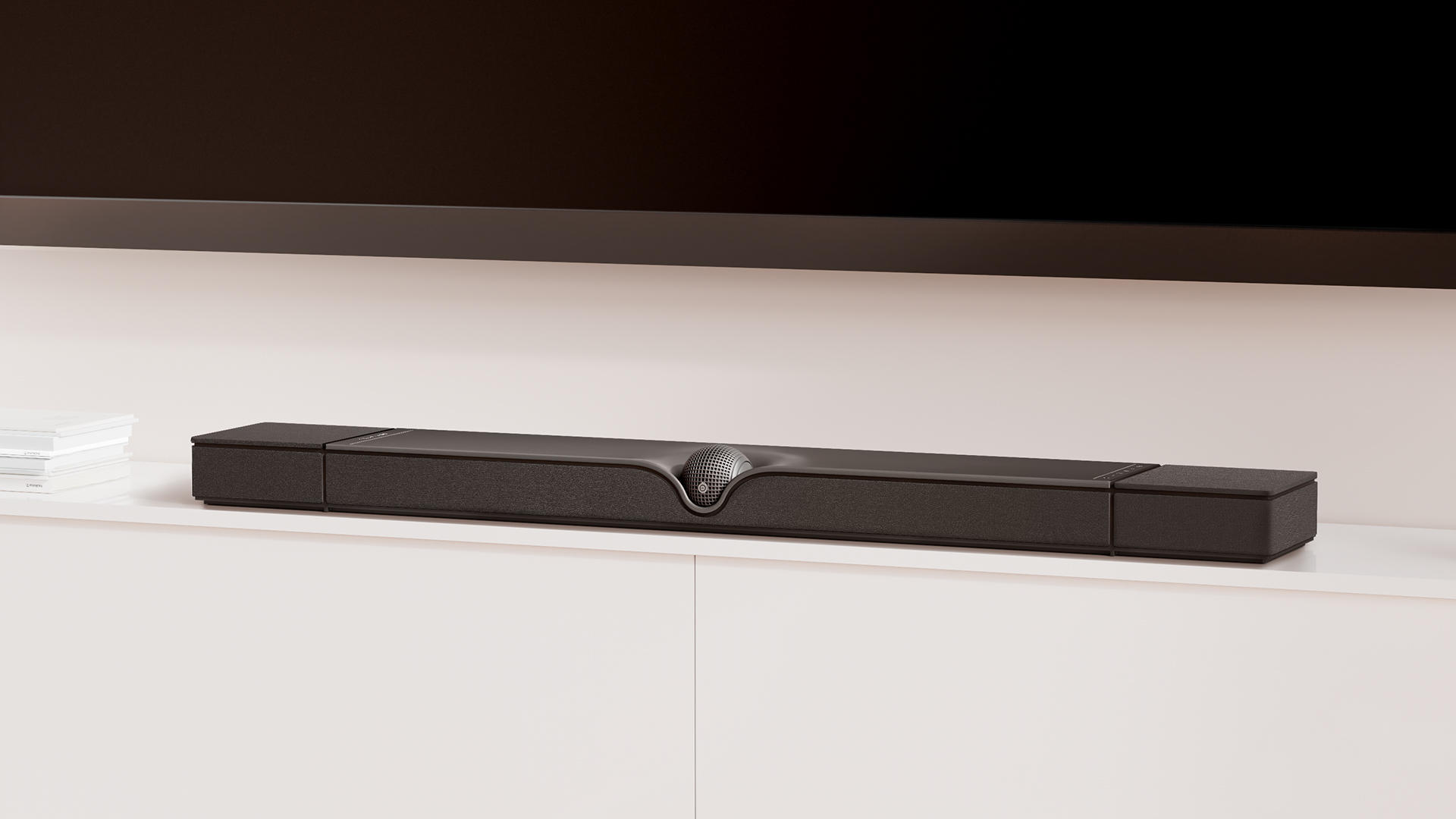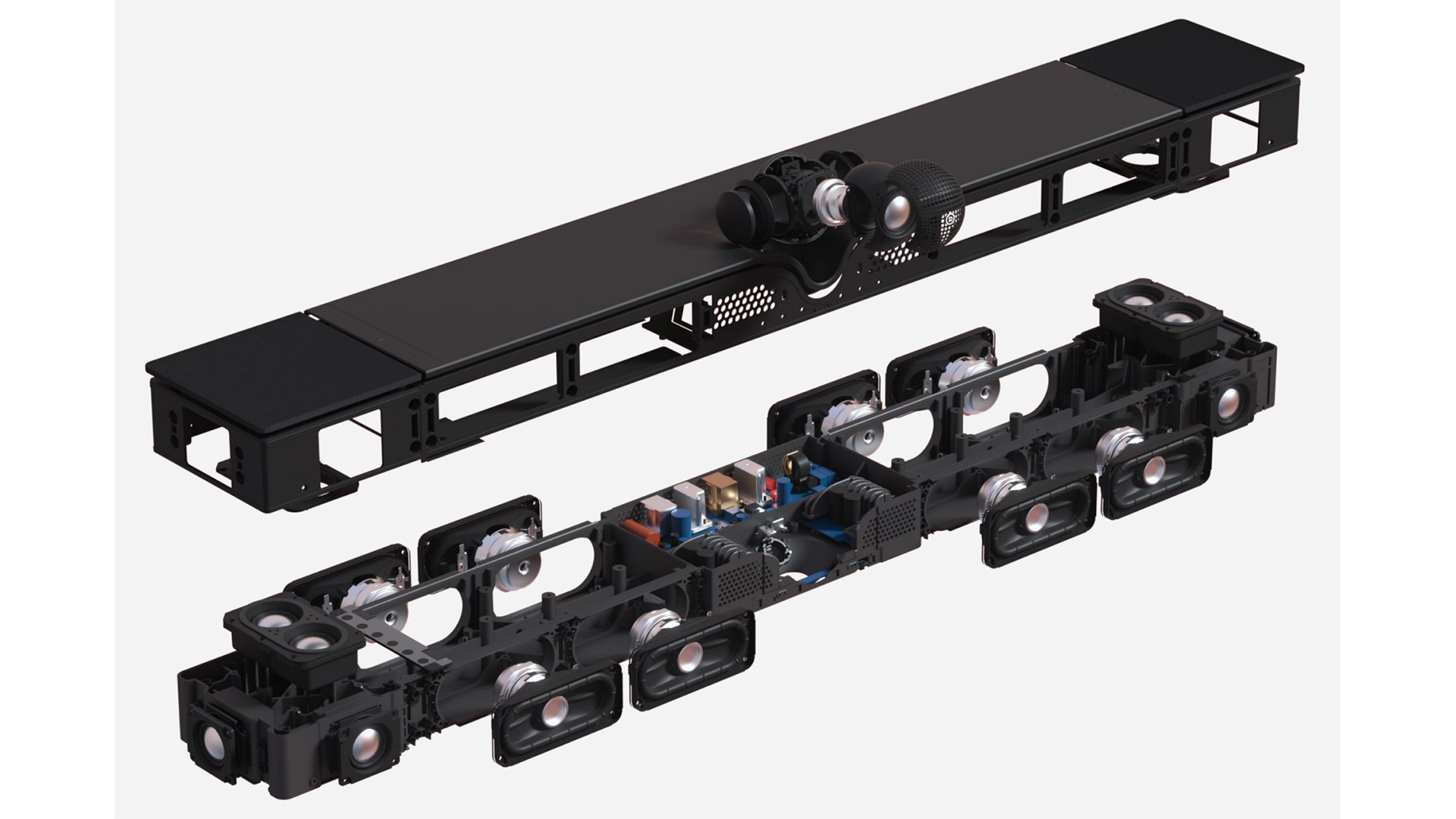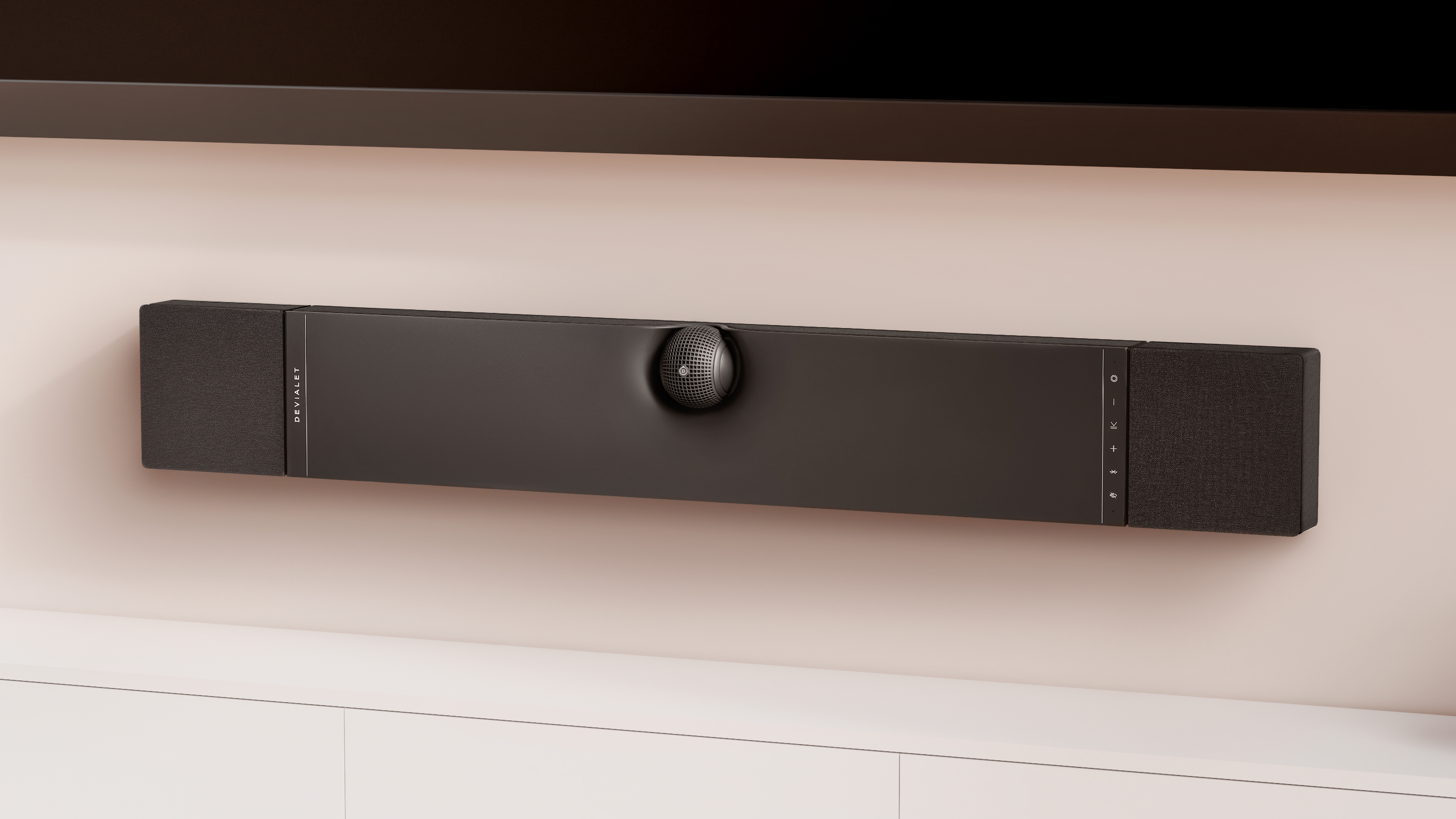

French speaker specialist Devialet has just unveiled the Dione, a Dolby Atmos soundbar that’s designed to give you the impact of a soundbar and subwoofer combo, but in a single unit. I had the chance to try it out, and I can tell you one thing up front: it delivers.
The Dione is far from the first of its kind: plenty of the best soundbars aim to bring serious sound fidelity from a single box, because there are plenty of people who prefer not to have to house a chunky subwoofer somewhere in their living room. The Sonos Arc is probably the most famous single example – but even then, Sonos will happily also sell you a subwoofer, partly because there’s simply no competition between the bass the Arc is capable of producing and what even a cheaper subwoofer can.
But the Devialet Dione doesn’t want you to have to deal with a subwoofer at all. And so it’s a big beast, designed with eight force-cancelling subwoofer drivers built-in, which take up a huge portion of its frame, with an array of full-range drivers at each end that create width and height, and a sphere in the centre that delivers the centre channel.
The eight subwoofers have a huge and clear impact immediately, and it’s what really sets the Devialet apart from the competition. A car engine in a soundtrack rumbles towards your diaphragm as well as your ears; an explosion really sounds like it’s tearing a building apart; and even music gets that full-bodied bassy resonance it needs to sound truly realistic. I use the Sonos Arc without a subwoofer as my main sound system at home, and the Dione adds a whole new dimension compared to it… and not a subtle one. It's immediate, and it underpins everything, like how a layer of paint looks more full and vibrant with the right undercoat.
Using eight woofers is vital here not so much for the total power output (though it doesn’t hurt), but more for the force-cancelling configuration (or push-push setup, as its often known in hi-fi). What this means is that you have four drivers facing forward and four facing backwards in perfect opposition to each other, and they’re matched so that exactly the same audio comes out of both.

The Devialet's innards exposed – you can see that lots of the width is dominated by those eight subwoofers, with the other speakers taking up less room at each end.
The point is to reduce the physical vibration that people associate with subwoofers – they’re not really supposed to shake your shelves. If the fittings are shaking, it means energy is getting wasted, and the vibrations of the body will be interfering with the vibrations that make the sound. In a force-cancelling system, the sound is played in both directions at once so that any reaction to their force that would cause shaking in the body is balanced out by having the exact same force going in the opposite direction. Unstoppable force meets… other unstoppable force. So it means that the Dione won’t vibrate your OLED TV right off your wall, or cause your TV stand's screws to rattle. And it’s less likely to transfer through the floor and annoy the neighbours.
Having great bass also helps you to appreciate how well other effects stand out, since you get to experience a bigger dynamic range. The Dione impressed me with its handling of detail as well, and is particularly good for positional audio to the left and right. With a Dolby Atmos movie, you can really feel the noise of something rocketing across the screen, and it can get pretty close to sounding like it’s made it all the way to your direct left or right.
Get all the latest news, reviews, deals and buying guides on gorgeous tech, home and active products from the T3 experts
There are 17 speakers in total, configured for 5.1.2 channels of Dolby Atmos sound. Obviously, eight are the subwoofers, but that still leaves nine speakers just for the other channels.
The only thing I wasn’t immediately impressed by in my listen was the height, which certainly sounded tall, but never really felt overhead in the same way that the left and right sounded like they were actually to my sides at moments. But I had limited testing time, so we’ll have to wait until our full review for more of a verdict.
As I mentioned above, all of this tech means that the Dione is deep physically as well as aurally. It’s about the same height and width as the Sonos Arc, but is 50% deeper, which is going to push some people’s space to its limit, depending on how big your TV’s stand is.

The Devialet Dione can be mounted vertically on the wall, or can sit horizontally on a TV bench, as in the image at the top.
The Devialet is also more functional looking than it is aesthetically impressive – which is hardly surprising from a soundbar, but this is the company that makes the iconic Devialet Phantom, so the bar is high. There’s nothing bad about how it looks, and the black simplicity is generally what you want from a soundbar, so that it doesn’t catch the eye when watching something. It’s made from nice materials, with a solid top for most of it, and then acoustically clear cloth at the ends, where the arrays of full-range drivers are.
You do get one big, clever nod to Devialet’s bolder design tendencies, and that’s the sphere in the middle, housing the centre speaker. On its own, you might think it’s just a physical flourish (and Devialet likes to use spheres, so it’s no surprise), but there’s a purpose to its shape too: the soundbar can lat flat on a TV table or it can be wall mounting, in which case what used to be the top now faces forwards. The Dione automatically detects the changed configuration, and tweaks its settings to that what used to be upfiring drivers how deliver sound forwards, and vice versa. The one thing you need to change manually is the sphere, which you rotate round so that it still faces forward.
I was really impressed with the Devialet Dione, and I can see a lot of people like me, who have limited space at home but a craving for big cinema-like sound, loving it. That’s as long as you’re good with the price of £1,990/$2,400. It’s no surprise that all this tech takes it into premium territory, and for that price you can get a Sonos Arc with a subwoofer and two wireless rear speakers for a bit of true surround sound.
But that misses the point, which is to have everything in one box. It’s very high-end, but I’ve never heard anything that delivers quite such a full range of sound from a single block, and I think that’ll win over a lot of people who get the chance to hear it.
Matt is T3's former AV and Smart Home Editor (UK), master of all things audiovisual, overseeing our TV, speakers and headphones coverage. He also covered smart home products and large appliances, as well as our toys and games articles. He's can explain both what Dolby Vision IQ is and why the Lego you're building doesn't fit together the way the instructions say, so is truly invaluable. Matt has worked for tech publications for over 10 years, in print and online, including running T3's print magazine and launching its most recent redesign. He's also contributed to a huge number of tech and gaming titles over the years. Say hello if you see him roaming the halls at CES, IFA or Toy Fair. Matt now works for our sister title TechRadar.
